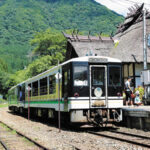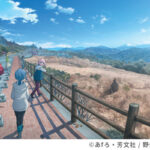ATT.JAPAN × JapanUp! magazine
December 2021 (vol. 170)
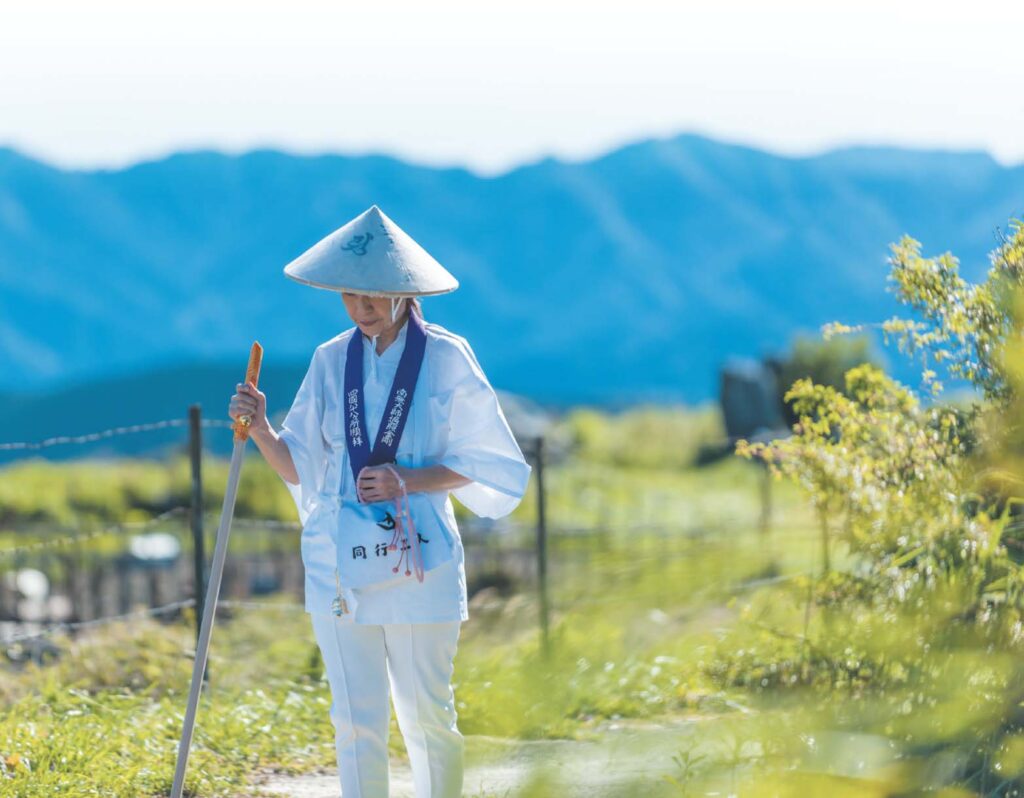
“Ohenro” (or “henro”) is a pilgrimage of 88 temples, which are associated with the famous priest Kukai (Kobo Daishi), the founder of the Shingon sect of Buddhism, via the routes taken by him. It is said that your spirit is purified and 88 benefits and merits are brought to you once you complete your pilgrimage. Recently, people undertake the journey for various purposes, such as better health, commemoration of the dead, self-discovery, and tourism.
The 88 temples for ohenro, called “fudasho,” are numbered in order from Tokushima, Kochi, Ehime, and Kagawa prefectures in Shikoku. It takes more than 40 days to visit all of the temples on foot. However, there is no rule that it is necessary to visit them in this order and it is not necessary to visit them all in one trip. You can also travel not only on foot but also by car, bicycle, or public transportation, whichever is suitable for your needs. So, to begin with, you can casually drop by one of the temples during your sightseeing trip or visit the ones you like.
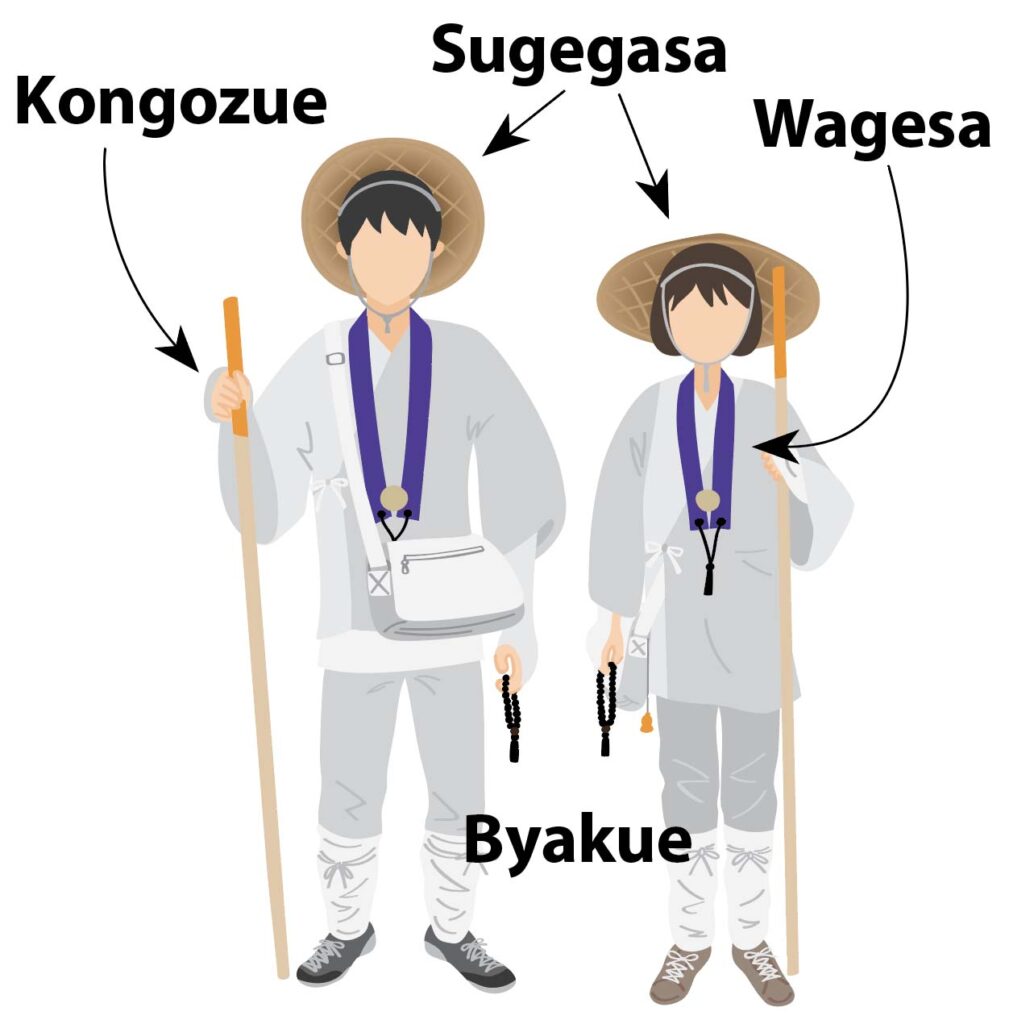
The pilgrims are called “ohenro-san,” and local people have the custom of watching over them and offering hospitality. The basic gear for ohenro-san includes byakue, kongozue, sugegasa, and wagesa. There are various types of gear, from the full-fledged ones to simplified ones, all available at various places in Shikoku. Of course, you can visit the temples without such gear. Take it easy and enjoy your trip in a style suitable for you. It is recommended to have a “nokyo-cho” booklet for collecting gonokyo (goshuin) stamps from individual temples, as it will be a good memory of your trip.
.
Cycling in Shikoku: also recommended for your ohenro trip
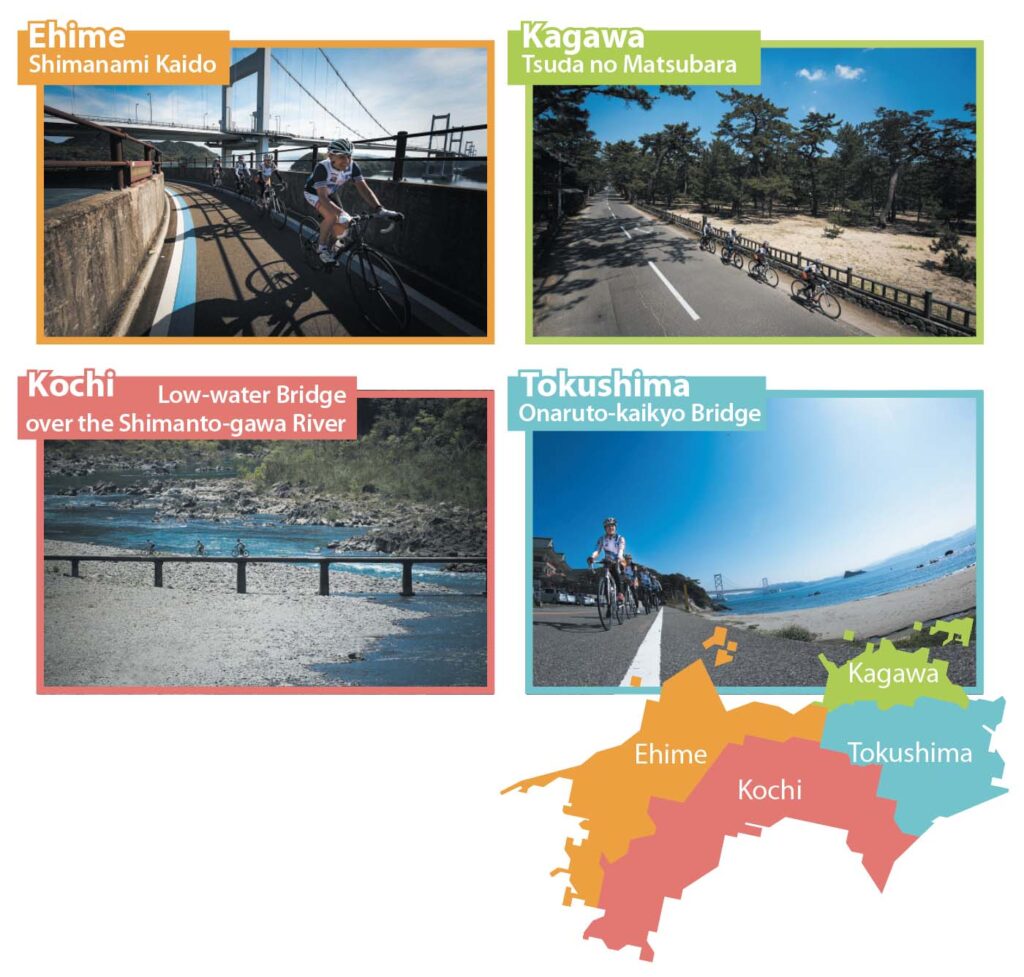
With different features of the four prefectures in Shikoku, and with beautiful scenery of the ocean and mountains, the island of Shikoku is perfect for your cycling trip. For a cycling trip, it is easier to plan visits to sightseeing spots and ohenro temples. If you are confident about your stamina, you should try a full circuit of the island of about 1,000km. Each prefecture has shorter courses for beginners to enjoy. So, enjoy cycling according to the style of your trip.
.
Tokushima
Temple No. 21 Tairyu Temple
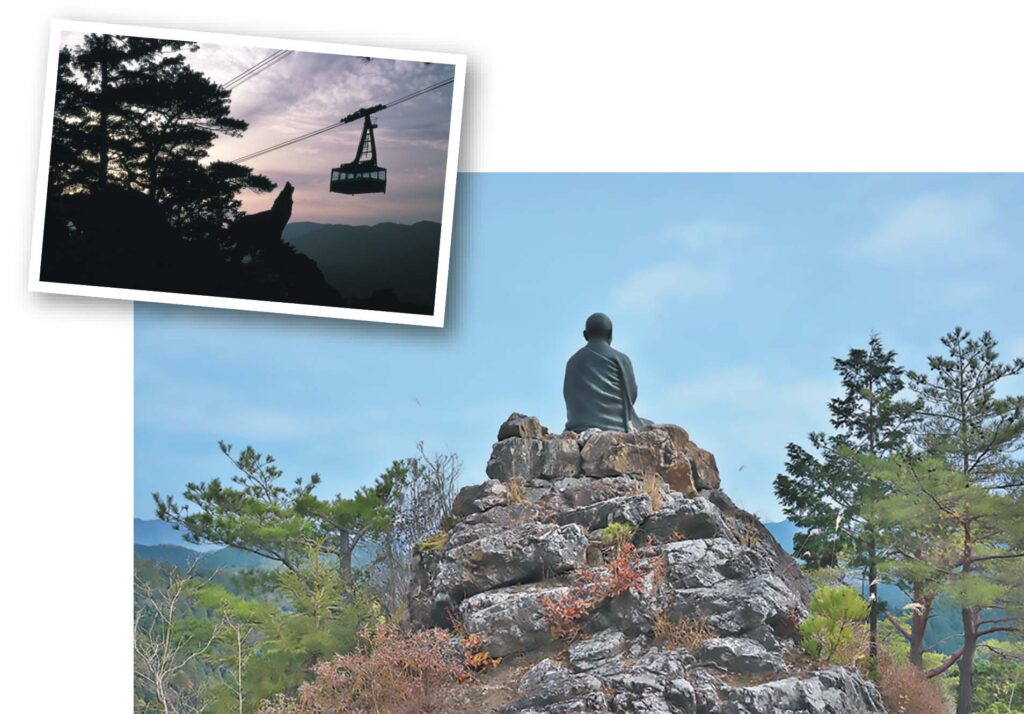
Located near the top of Mount Tairyuji, which is 618 meters above sea level, this temple used to be considered a challenging spot on ohenro trips; however, it is now easily accessible by ropeway. With the large-scale ropeway with the longest distance in western Japan, it takes about 10 minutes to the temple, during which you can enjoy a thrilling ride over rivers and mountains. It is one of the places where young Kukai had his training. One of the highlights of the trip to this temple is “Shashingatake,” a bronze statue of Kukai in training sitting on a rock.
2 Ryuzan, Kamo-cho, Anan City, Tokushima
.
Kochi
Temple No. 37: Iwamotoji Temple
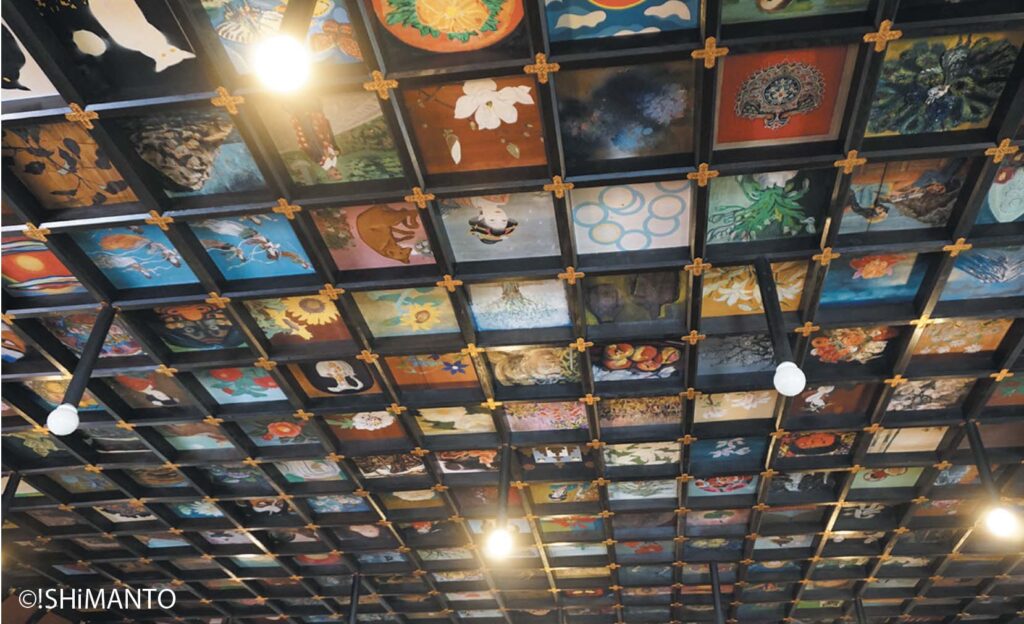
Located in Shimanto Town where the Shimanto-gawa River flows through, this unique temple has pop art drawings here and there. Among others, 575 drawings on the ceiling, which were collected from all over Japan through a competition upon the renovation in 1978, are stunning to see. This temple also serves as an accommodation, surprisingly offering plans where you can enjoy a sauna within the premises and camping!
3-13 Shigekushi-machi, Shimanto Town, Takaoka County, Kochi
.
Ehime
Temple No. 51: Ishiteji Temple
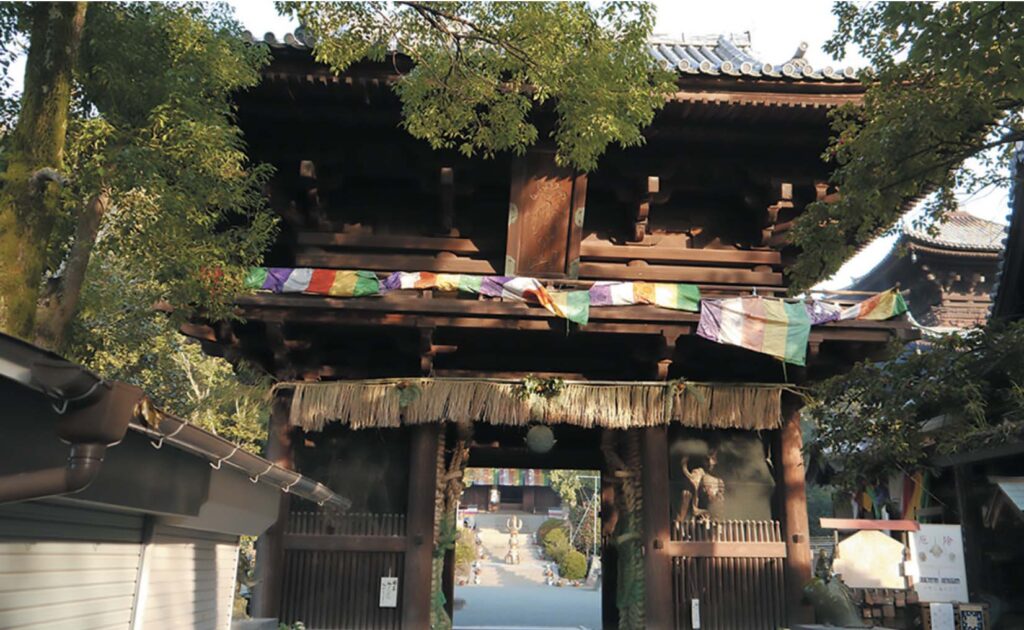
With its huge temple grounds of 66,000 sq. meters, this temple has many buildings designated as nationally important cultural properties, such as the main building and the three-story pagoda. The statues of Kongorikishi at the Nio Gate are a must-see, and are said to be created by Unkei, a distinguished sculptor active from the mid-12th to 13th century, and designated as National Treasures. Since it is located about 1km from famous Dogo Onsen hot springs, you can easily drop by the temple during your sightseeing tour.
2-9-21 Ishite, Matsuyama City, Ehime
.
Kagawa
Temple No. 88: Okuboji Temple
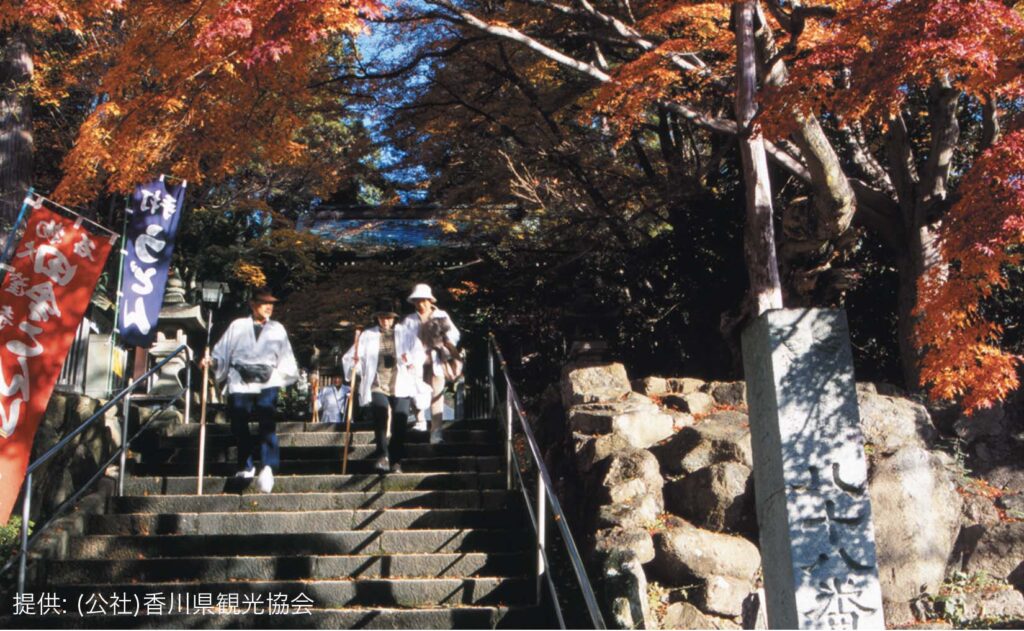
This is the last temple of the Shikoku Ohenro tour, called “kechigan,” when visiting the 88 temples in the order of the temple numbers. Located in the middle of the eastern side of Mount Yahazu with its altitude of 788 meters above sea level and close to the border between Kagawa and Tokushima prefectures, this temple is famous for beautiful autumn foliage. In the Hojodo building, many kongozue sticks from ohenro who completed their Shikoku pilgrimage trip are stored.
96 Tawakanewari, Sanuki City, Kagawa
Here are some soul-healing spots recommended for you to visit on your ohenro tour.
.
Ehime
Nametoko-keikoku Gorge
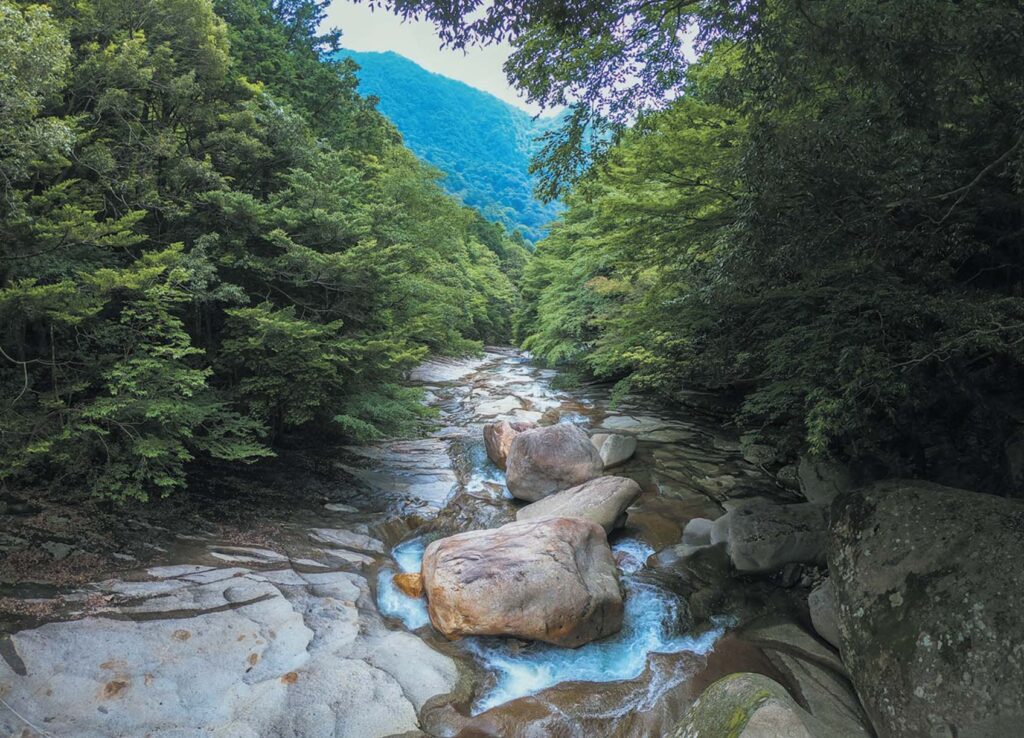
This huge gorge stretches for about 12km along the upper stream of the Meguro-gawa River, one of the tributaries of the Shimanto-gawa River. The clear stream flowing down over the smooth granite surface formed by erosion is beautiful. You can enjoy strolling in nature along well-maintained walking paths along the gorge.
30 min by taxi from Matsumaru Sta. (JR)
Riverside Lodge
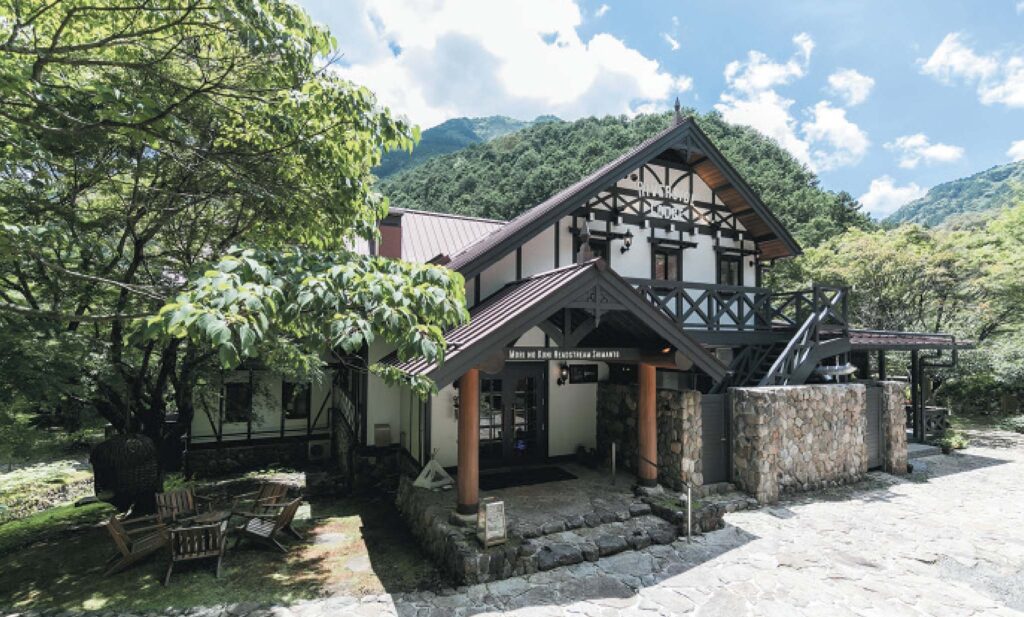
This accommodation facility opened in March 2020 at Nametoko-keikoku Gorge within Ashizuri-Uwakai National Park. The facility offers various activities to enjoy nature, such as a bonfire and a night tour. Enjoy the delicious food it serves, such as pizza made with ingredients from Napoli, Italy and local ingredients.

Dogo Onsen
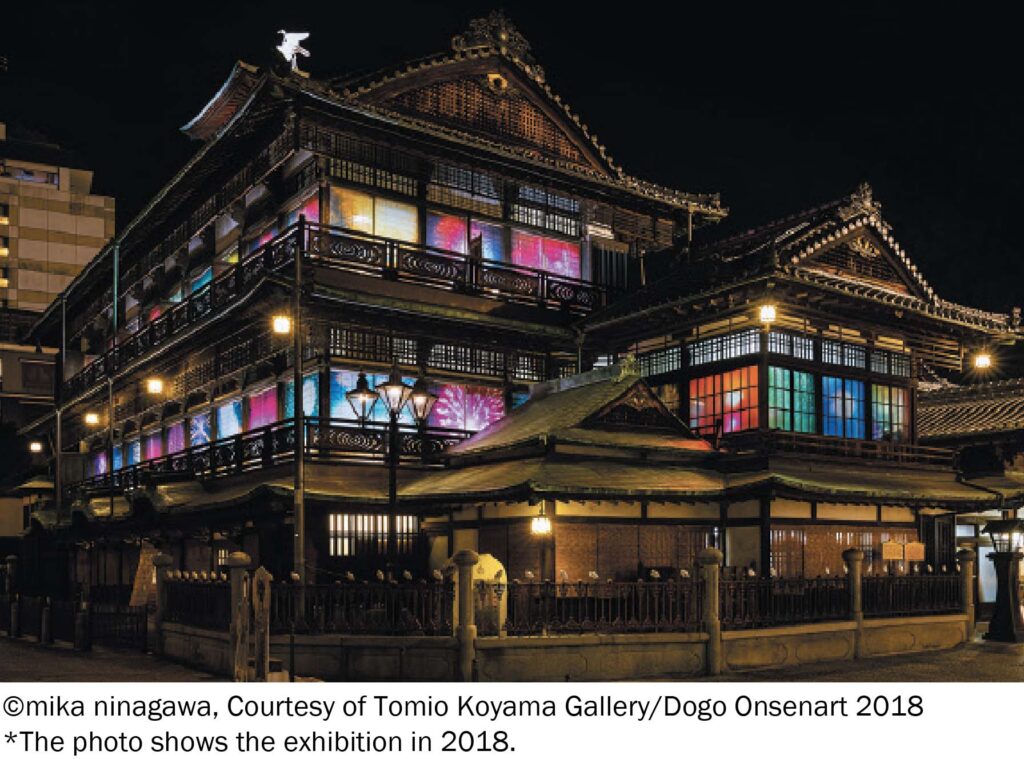
Counted as one of the three oldest onsen in Japan, Dogo Onsen is said to have opened as long as 3,000 years ago. Serving as a public bathhouse, the Dogo Onsen Honkan (main building), which is an important cultural property, is now operating under preservation and repair construction work until 2024. During the latter stage of the preservation and repair period, “Everyone’s Dogo Onsen, activation project” is now underway based on the concept of “stay hot, stay creative.” From September 24, 2021, various projects, including one with artworks by Mika Ninagawa, a photographer and movie director, will be held in the Dogo Onsen district until the end of Mach 2024.
.
Kochi
Kengo Kuma’s Works in Yusuhara Town
Located in the western part of Kochi Prefecture, Yusuhara is a small town in the middle of the grand Shikoku Karst that rises as high as 1,455 meters above sea level. Referred to as “a town above clouds,” this small town has six architectural works by Kengo Kuma, one of Japan’s most prominent architects, existing in harmony with the rich natural environment. Visit and enjoy the architectural works, such as “Kumo no Ue Library” and “Machi no Eki Yusuhara (Marche Yusuhara),” which were constructed with wood from Yusuhara.
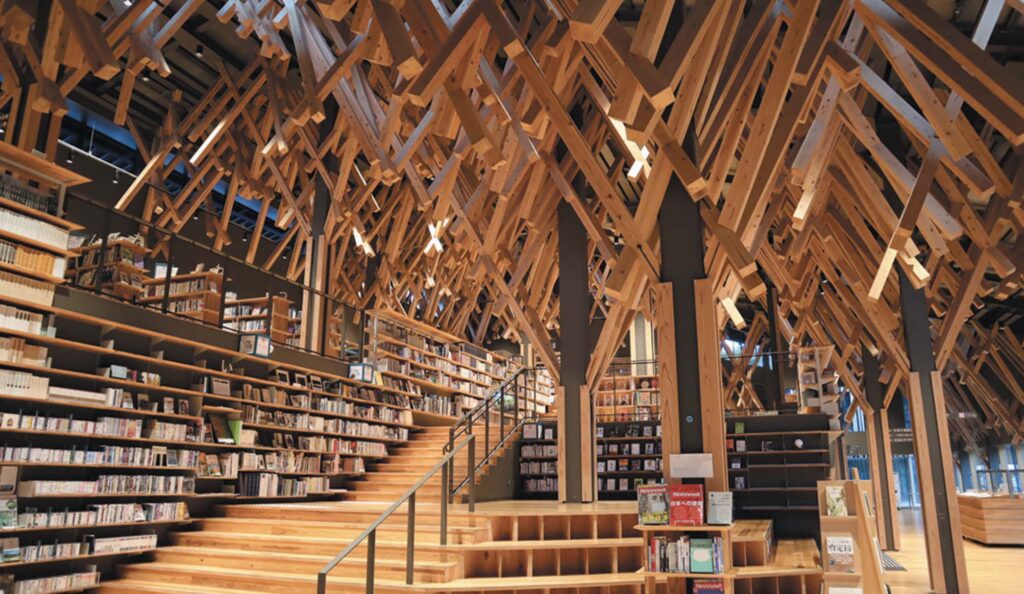
77 min by bus from Susaki Sta. (JR)
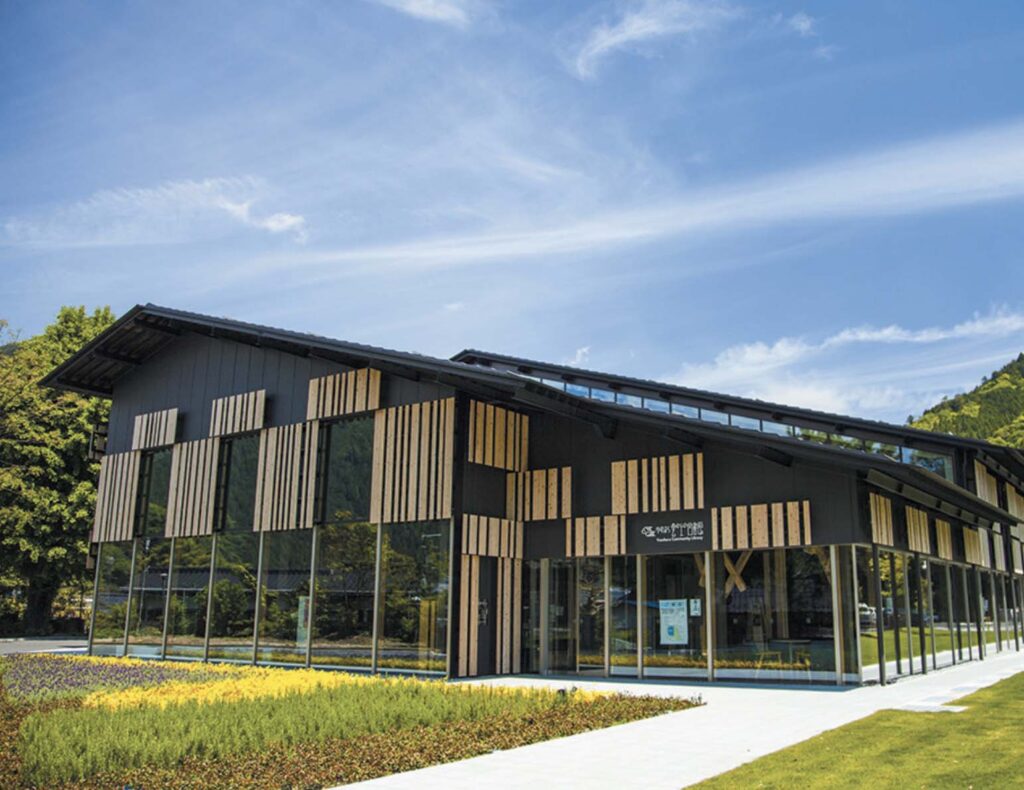
Monet’s Garden Marmottan in Kitagawa Village
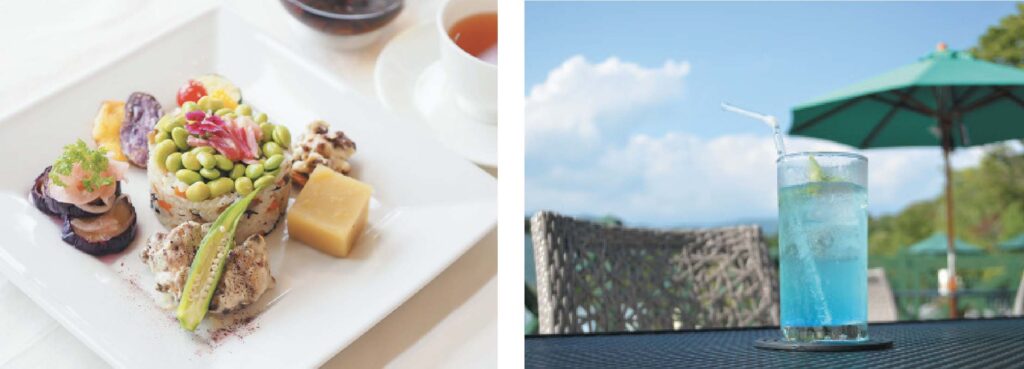
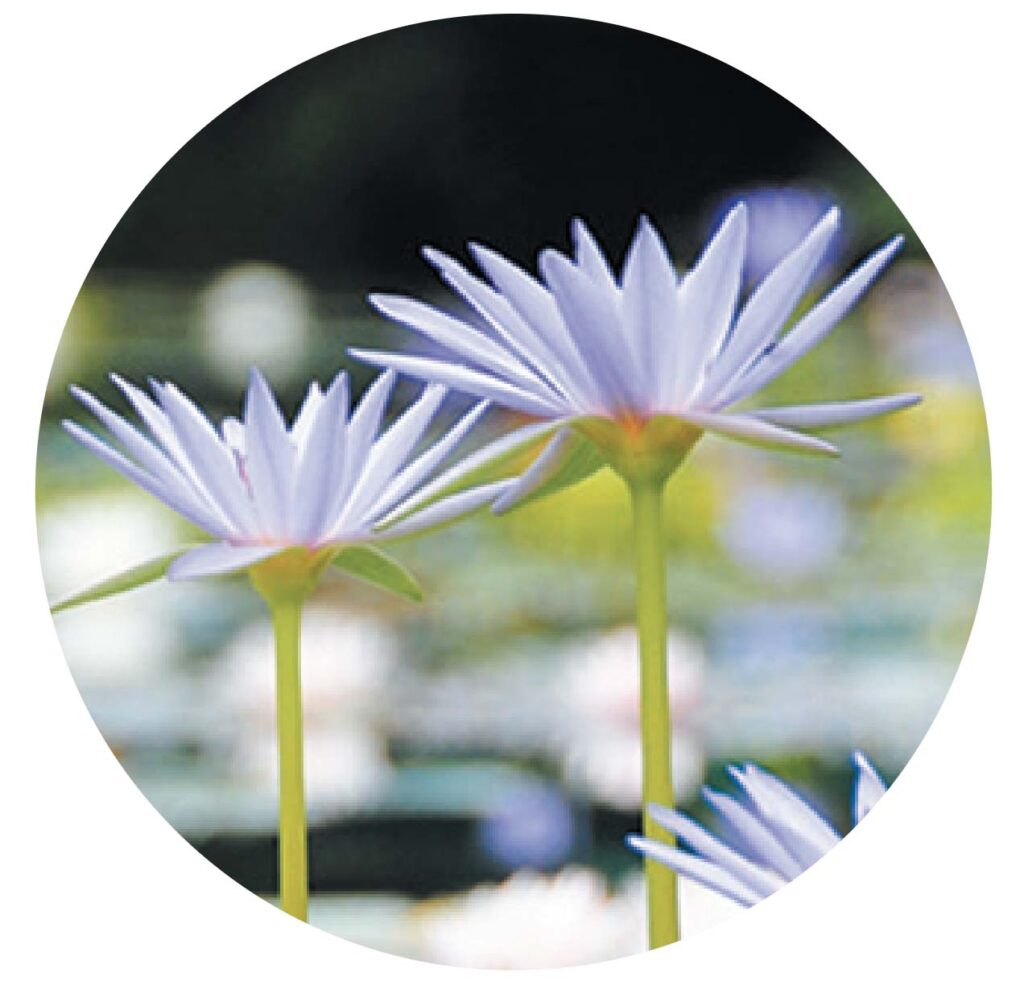
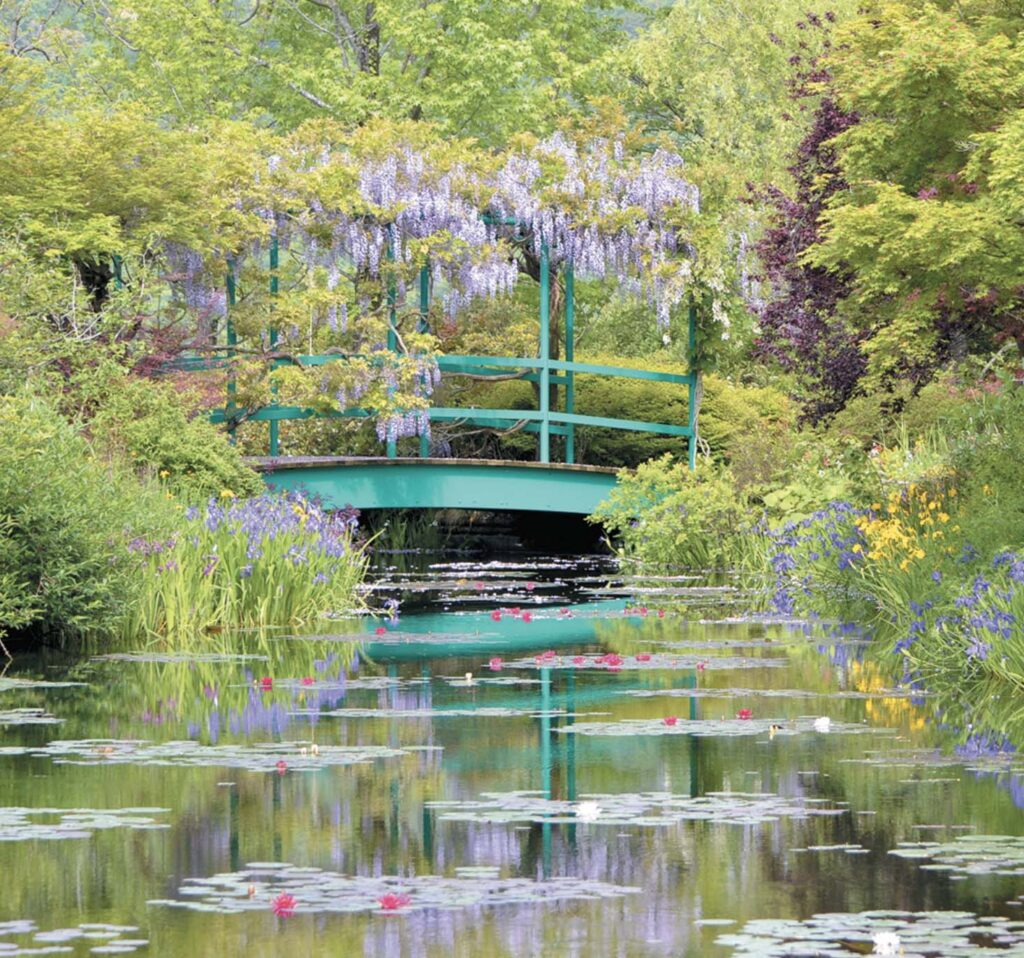
Modelled on the garden created by Claude Monet, the great impressionist artist, in Giverny, France, this garden facility has about 100,000 varieties of beautiful seasonal flowers and flowering plants, including water lilies, on its grounds of about 30,000 sq. meters, making you feel like walking in one of the landscapes painted by Monet. The cafe inside the facility offers dishes with local ingredients as well as desserts and drinks with local yuzu citrus, a specialty of Kitagawa Village. 10 min by bus from Nahari Sta. (Tosa Kuroshio Railway)
.
Kagawa
Shikoku Aquarium
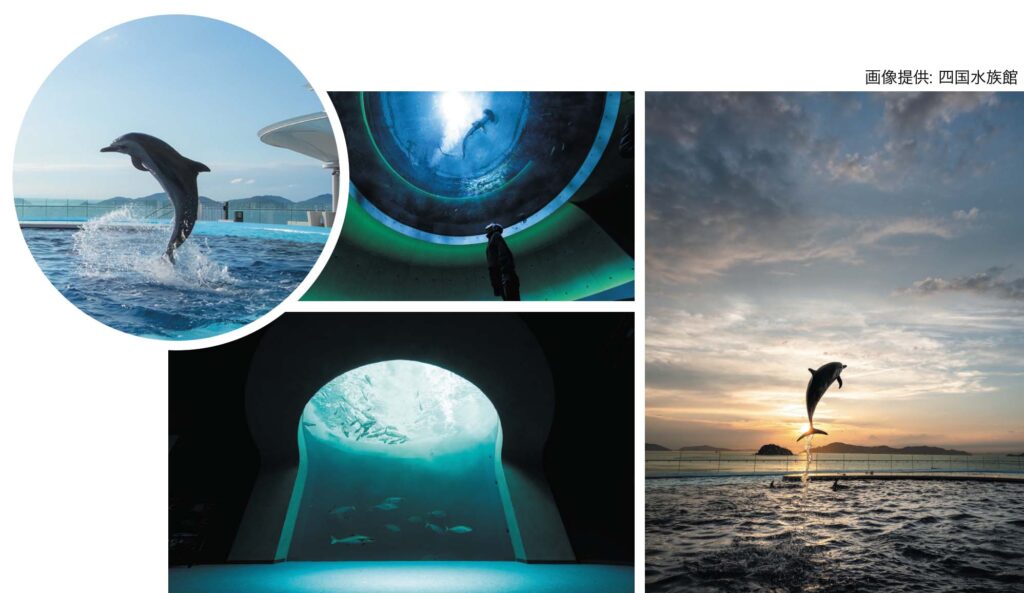
Opened in June 2020 at the base of the Great Seto Bridge connecting the main island of Honshu with Shikoku, this is the next-generation aquarium in Shikoku. With carefully-selected tanks and a mesmerizing light performance, the space is just like an art museum. The highlight is the pool where dolphins are swimming with the Seto Inland Sea in the background, offering a superb instagrammable spot. This aquarium is highly enjoyable not only for children but also adults.
12 min walk from Utazu Sta. (JR)
Reoma Resort
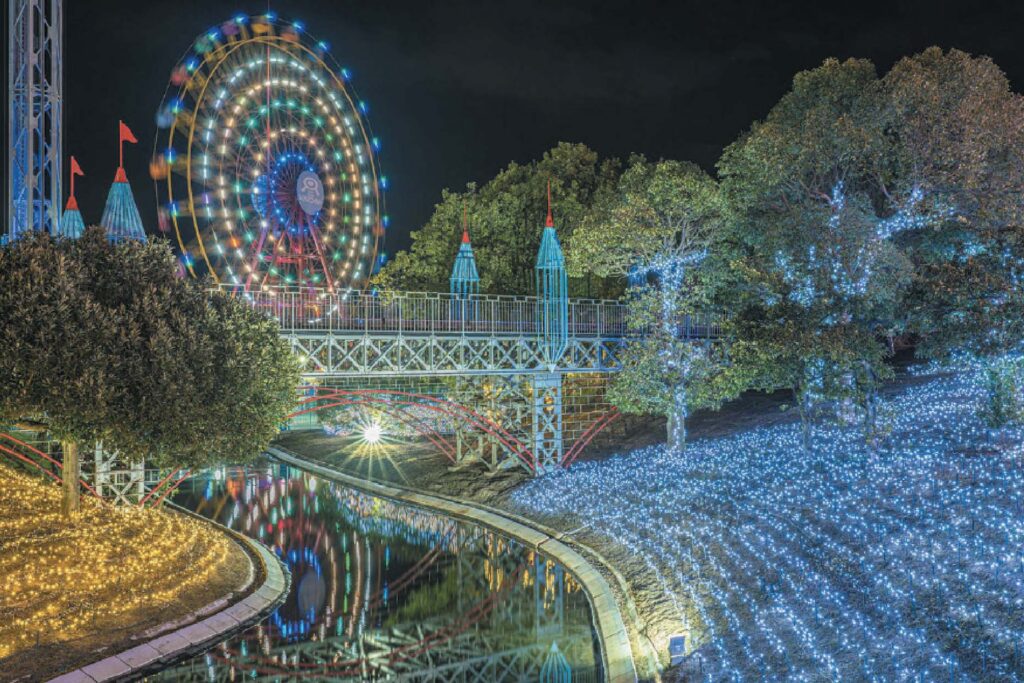
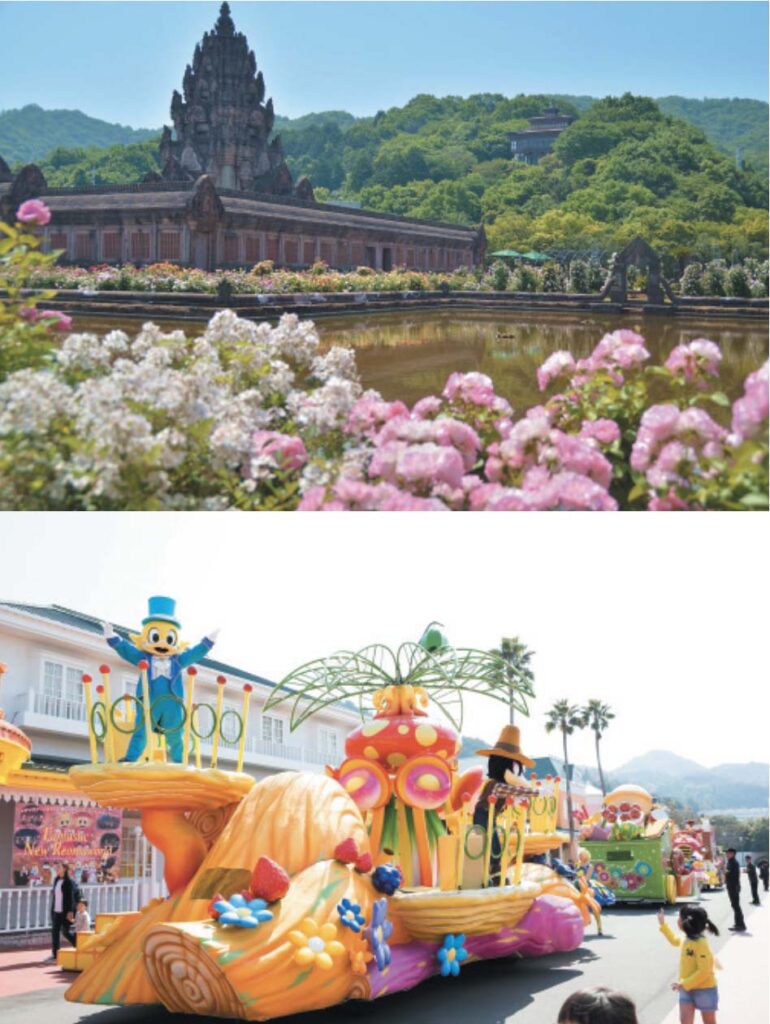
This theme park will reach its 30th anniversary this year. The park contains various areas, including “NEW Reoma World,” where you can enjoy amusement rides and character shows; “Reoma Flower World” with beautiful flowers, where seasonal flower events are held; and “Reoma Light World,” where you can enjoy projection mapping and illumination using about 2.5 million lights, offering a great time for both children and adults.
20 min by free shuttle bus from Kotohira Sta. (JR)
.
Tokushima
Iya Kazura-bashi Bridge
Made with a braided vine plant called shirakuchi-kazura, this suspension bridge has a length of 45 meters and a width of two meters and is suspended 14 meters above the water. It is thrilling to walk on this bridge, with a view of the beautiful emerald-green, fast-moving stream of the Iya-gawa River through the slits of the floor on the squeaking bridge! The bridge is reconstructed every three years, using about six tons of materials. The Iya Valley is considered to be one of Japan’s three best “hidden places” and awarded two stars in the Michelin Green Guide Japan.
25 min by bus from Oboke Sta. (JR)
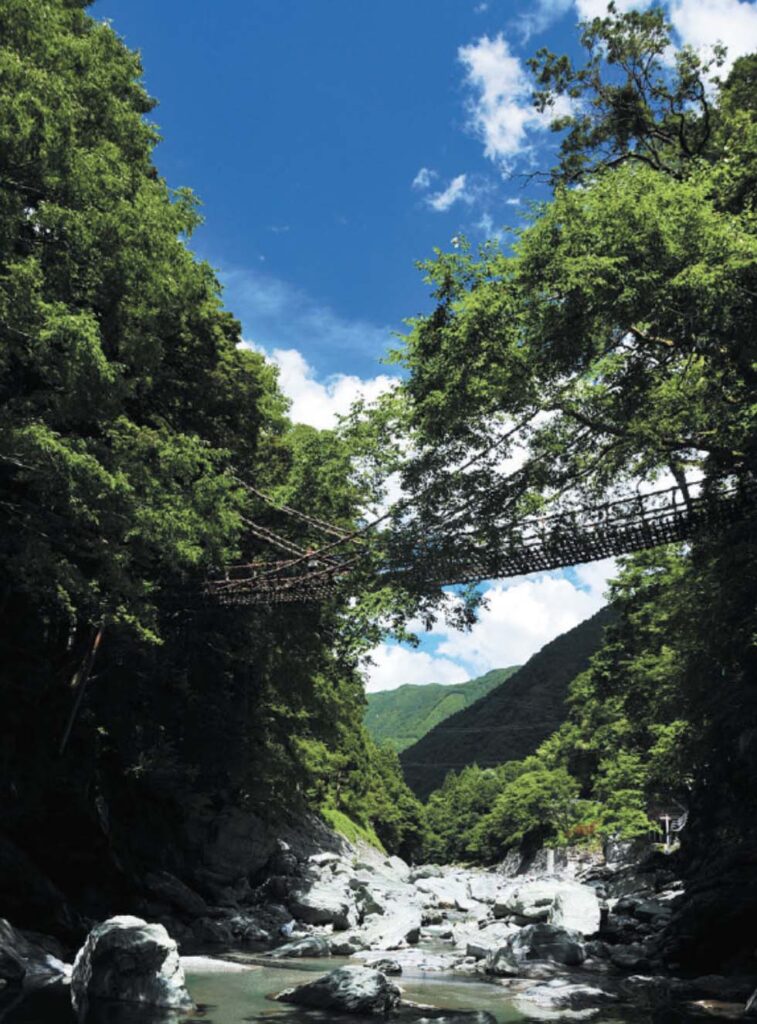

OTSUKA MUSEUM OF ART
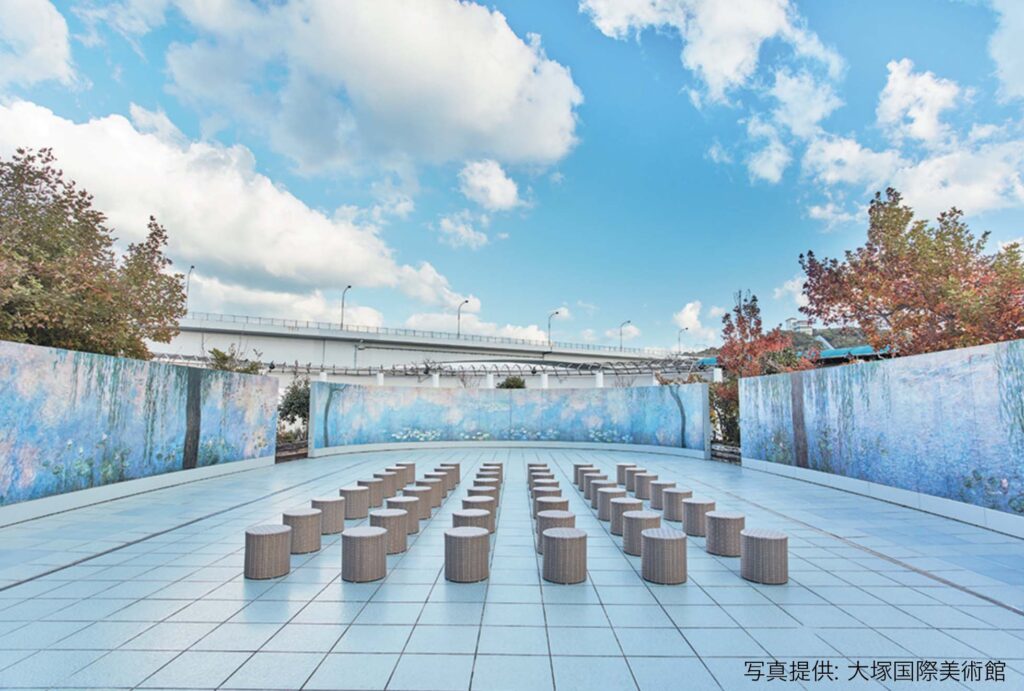
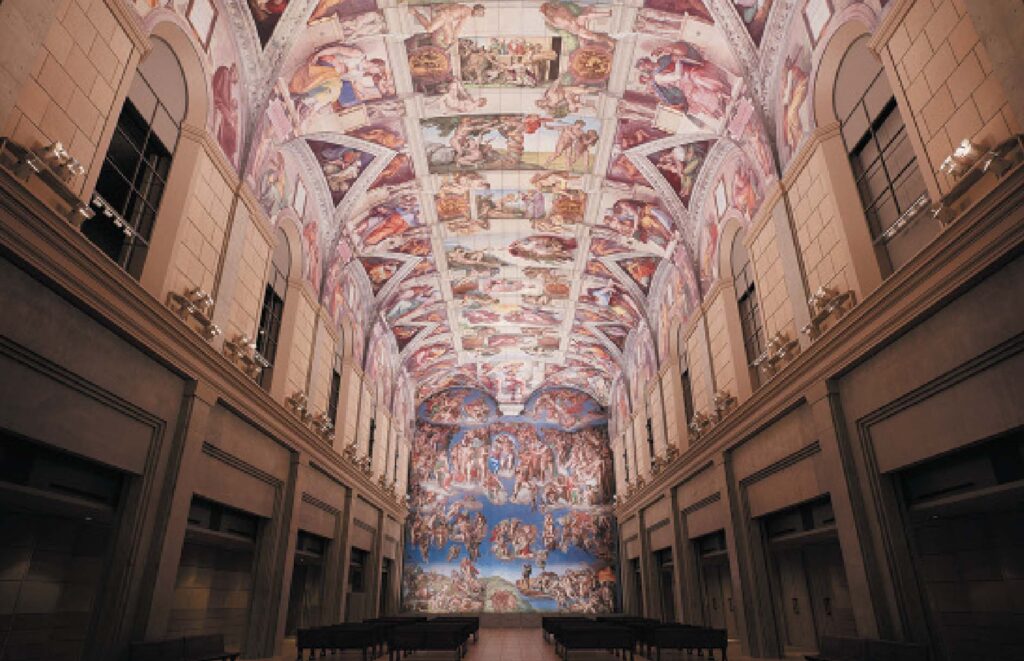
This art museum exhibits real-size replicas of famous Western paintings from the collections of about 190 art museums from 26 countries, created on porcelain panels using a special technology. Through the exhibition route stretching about 4km, you can enjoy famous paintings from all over the world in one place.
15 min by bus from Naruto Sta. (JR)
.
About att.JAPAN
The magazine att.JAPAN is for non-Japanese visiting from overseas and those residing in Japan. This quarterly magazine written in English, Mandarin, and Korean offers a wide range of information about Japan—from travel and sightseeing to various aspects of traditional culture and the latest trends. The magazine is distributed at major airports, hotels, and tourist information centers throughout Japan.
https://att-japan.net/en/
Facebook: att.JAPAN
Instagram: att.japan

.
.
.
.
f


